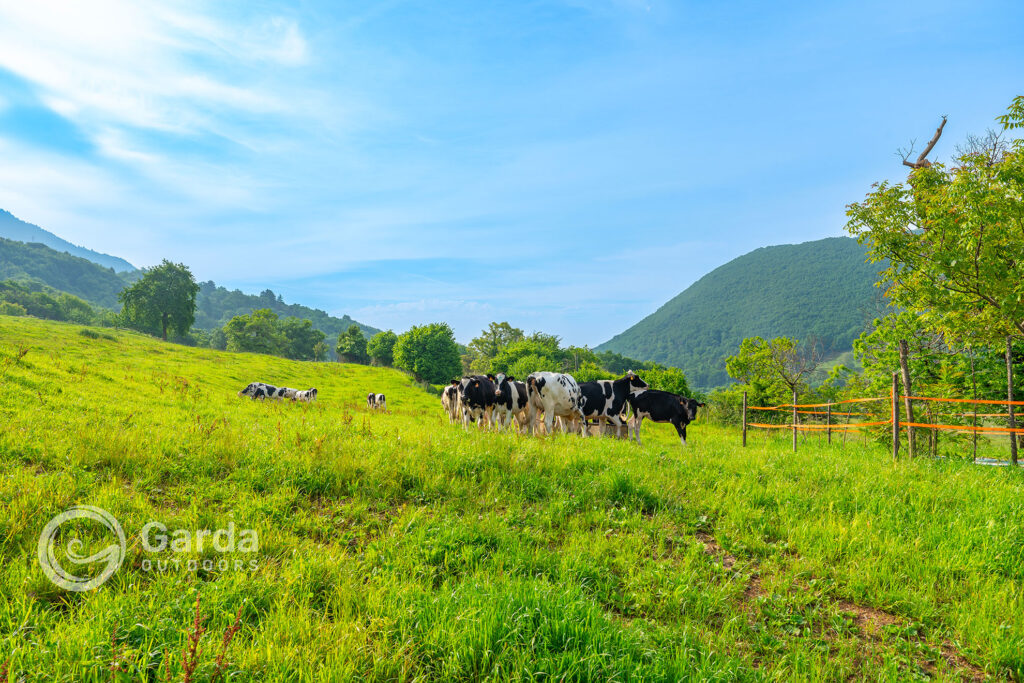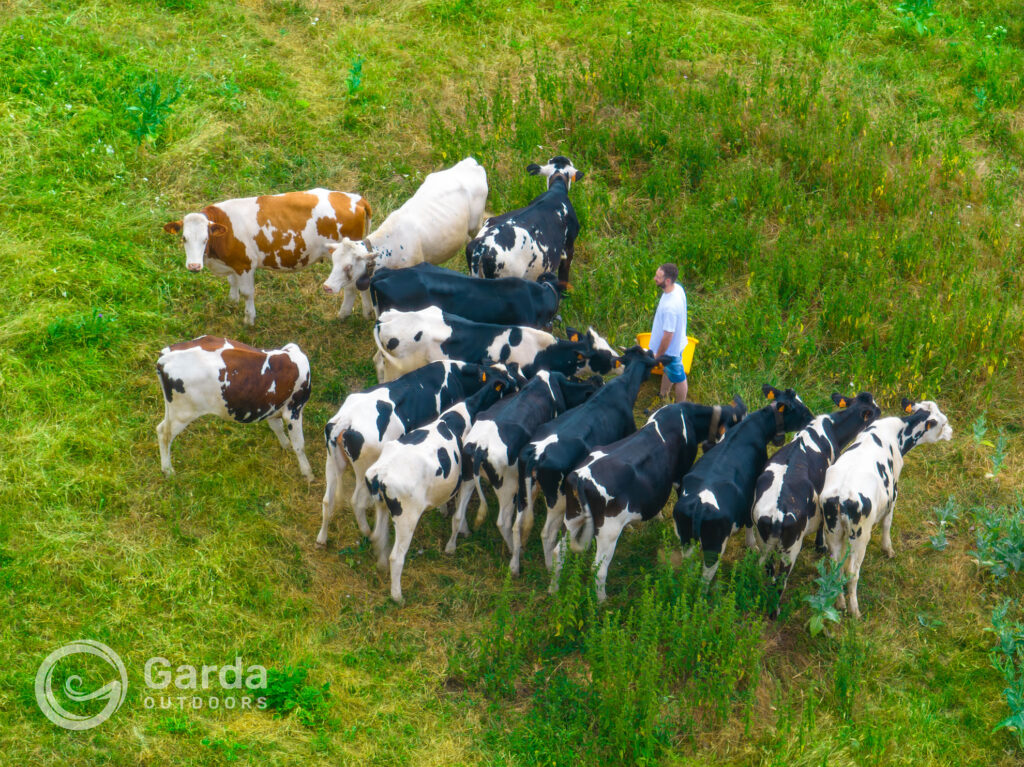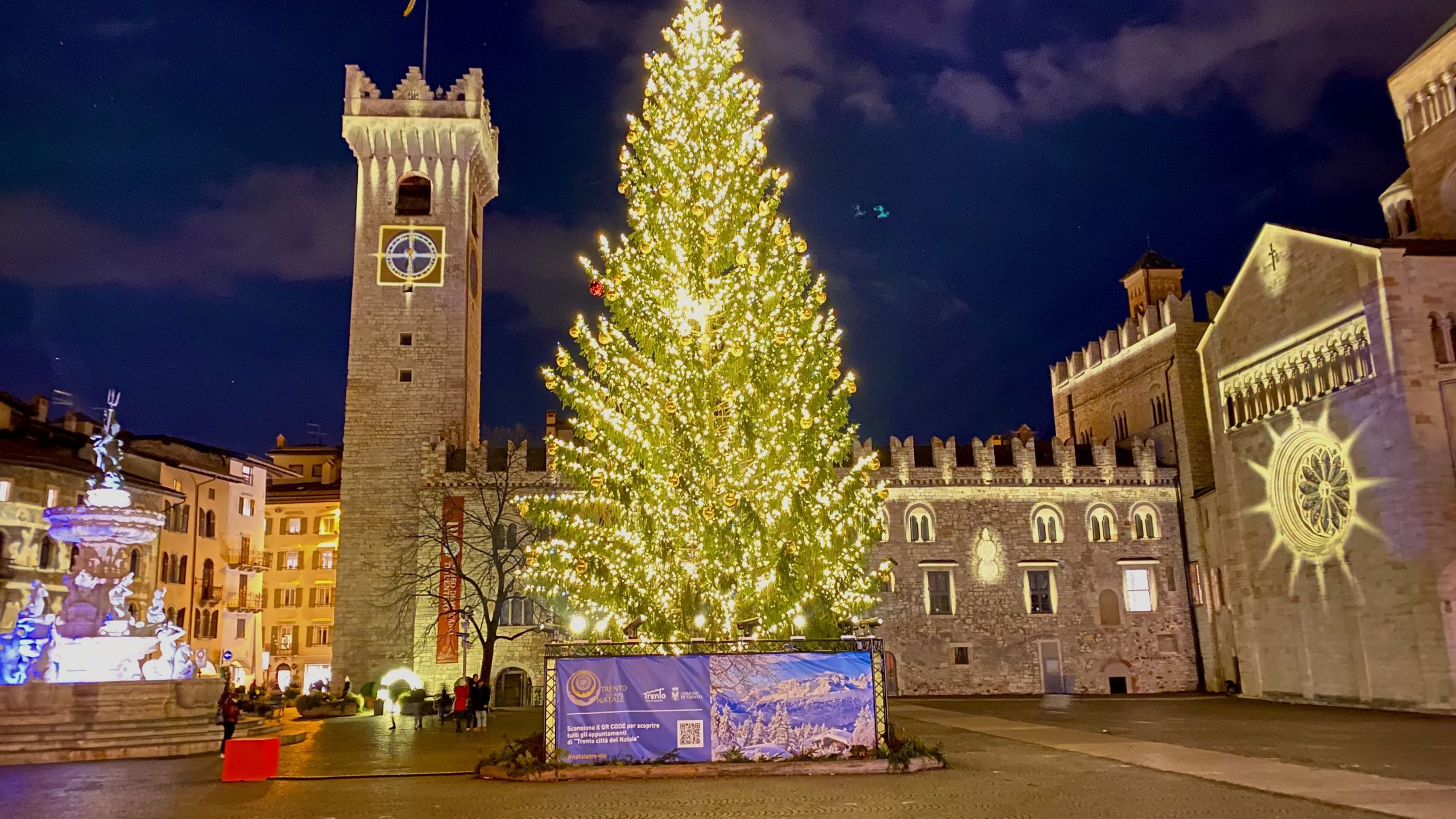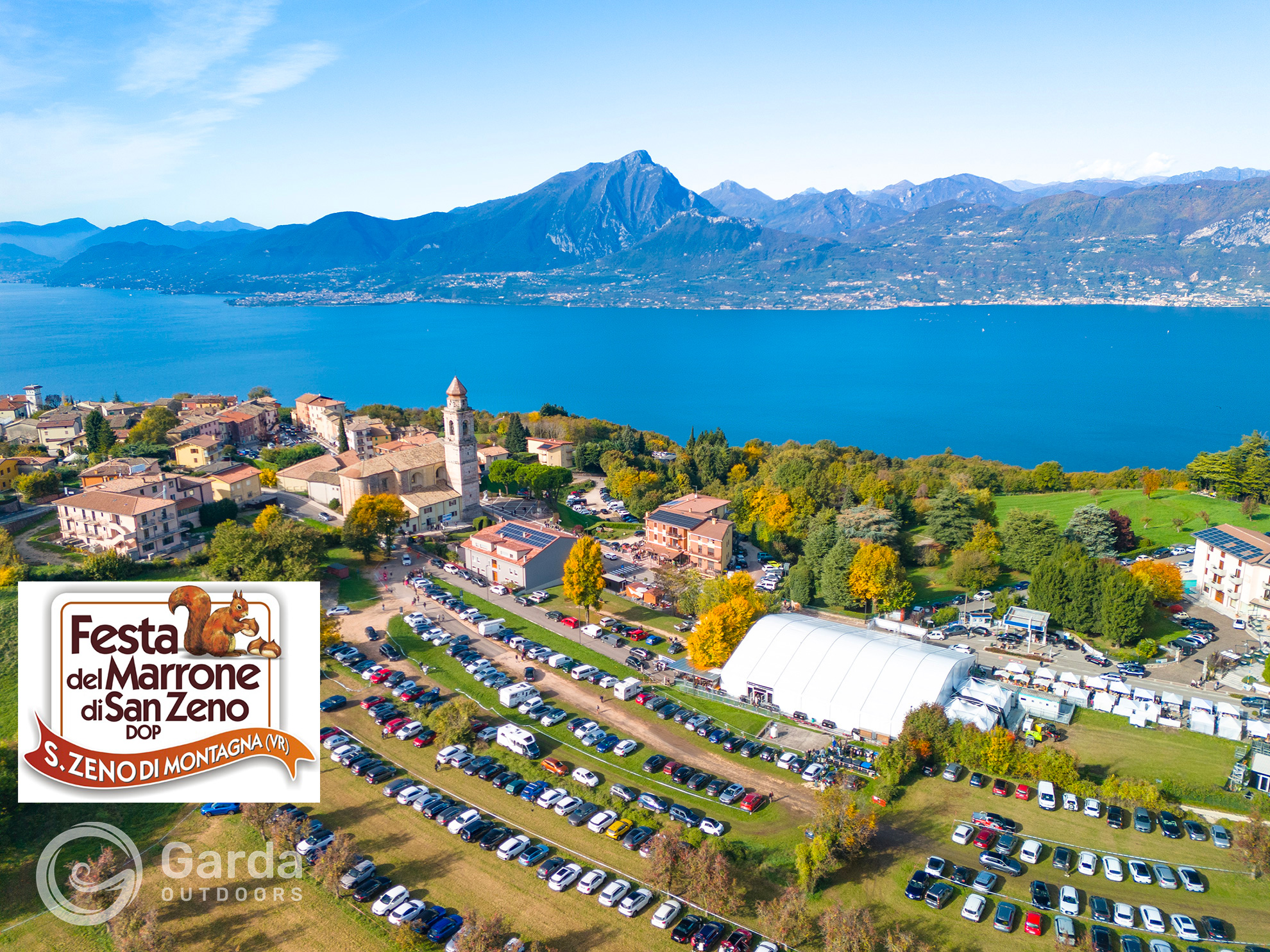In this journey through Baldo’s farms and pastures, we will discover what makes its milk and cheeses unique, and how to recognise a true and healthy product, far from industrial imitations.
Because here the cows live and feed ‘like queens’, and this is the result of a profound respect for nature, animals and work done as in the past.
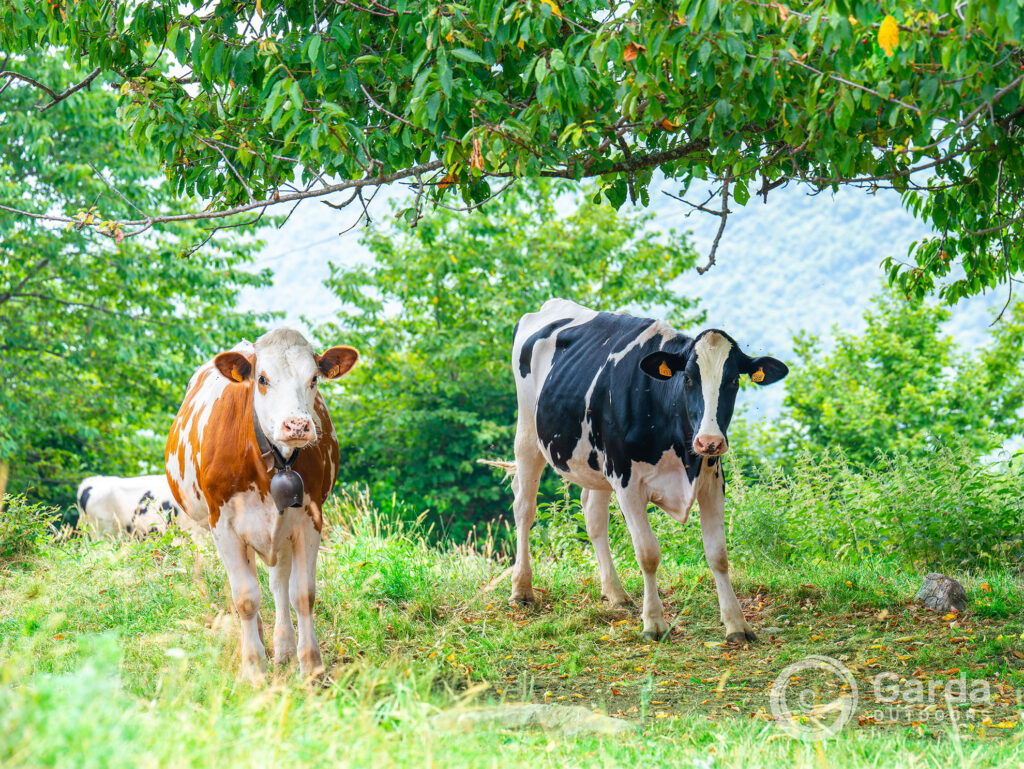
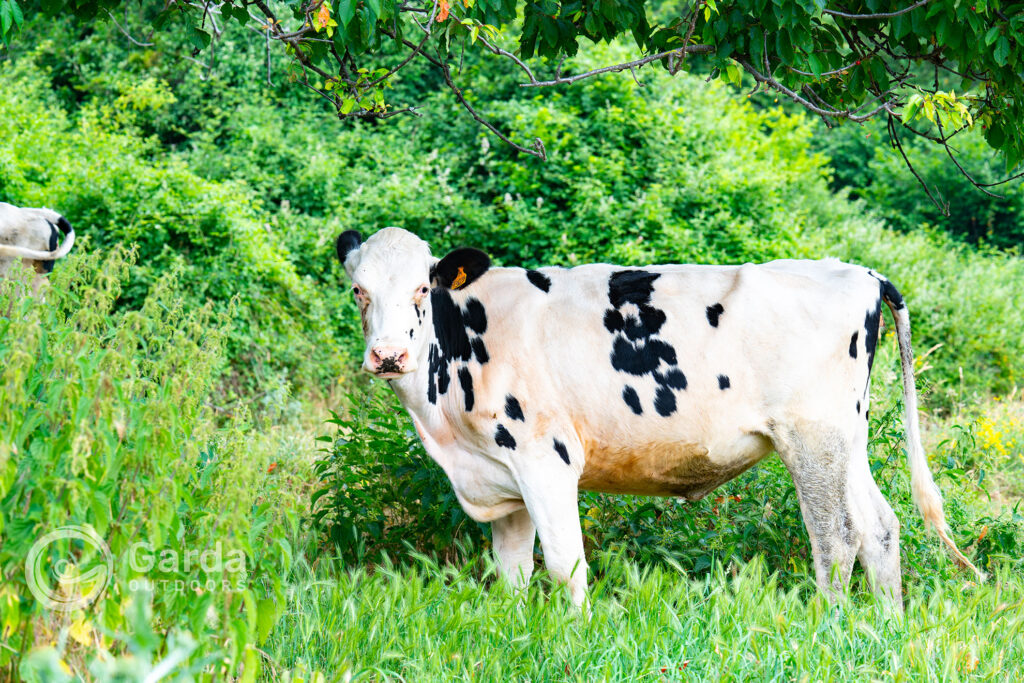
Accompanying us in this tale is Giovanni Campagnari, of the Fratelli Campagnari farm, in Lumini di San Zeno di Montagna; active, read well without squinting, since 1317.
After visiting the stables, I climb into an old 4×4 Jeep, cheerfully followed by a Border Collie named Rambo, to discover the pastures; and in the process, he generously tells me about the lives of all his animals.
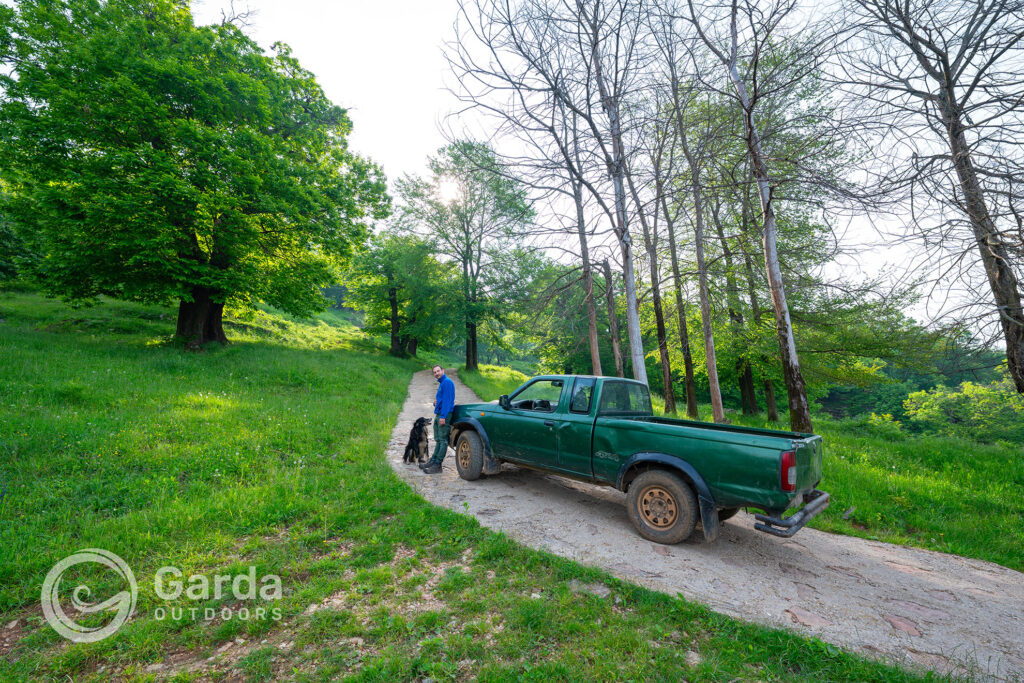
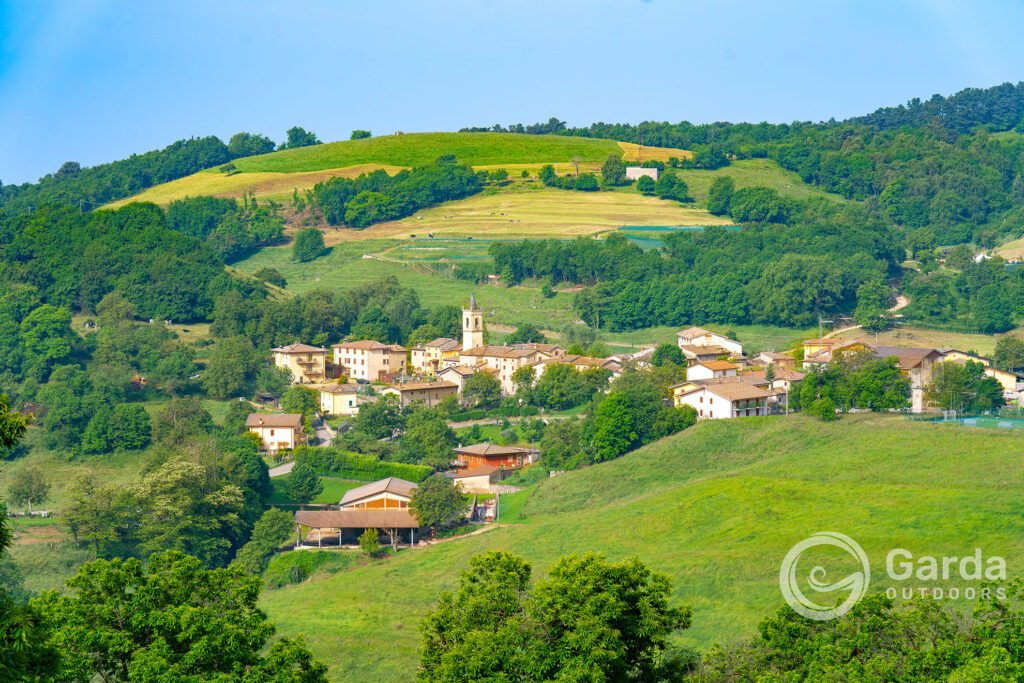
The cows of Monte Baldo
On Mount Baldo, immersed in the heart of what is known as the Hortus Europae – the garden of Europe – some of the best dairy breeds are bred: the queen is the Frisona, followed by the Bruna Alpina, the Pezzata Rossa and the sweet Jersey. All fed exclusively with natural fodder, produced independently by the farm in the rich and unspoilt meadows of Baldo.
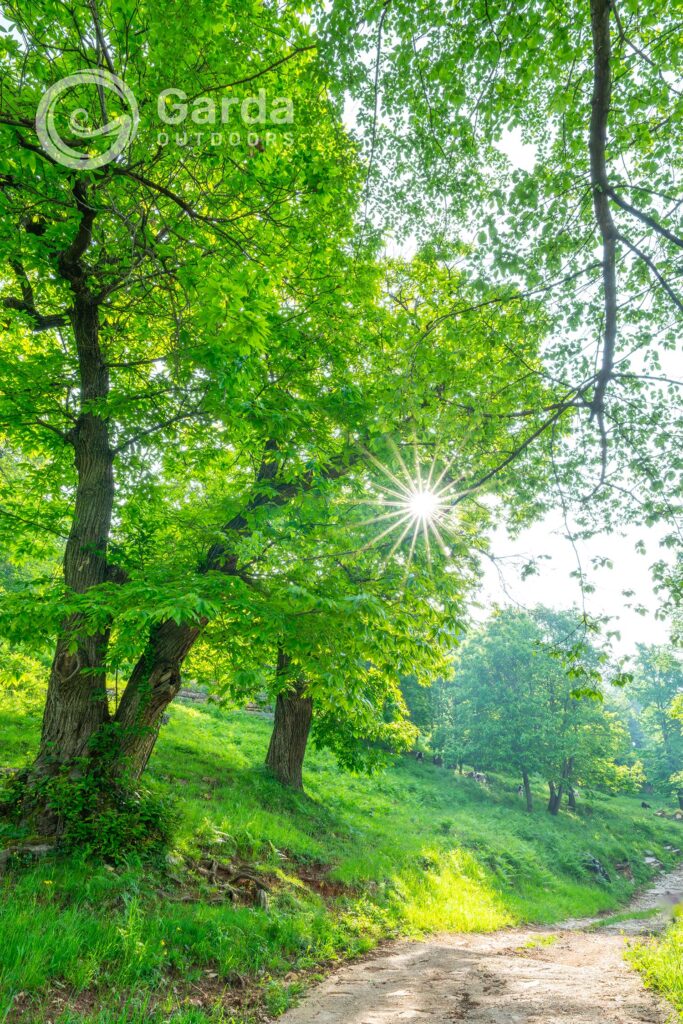
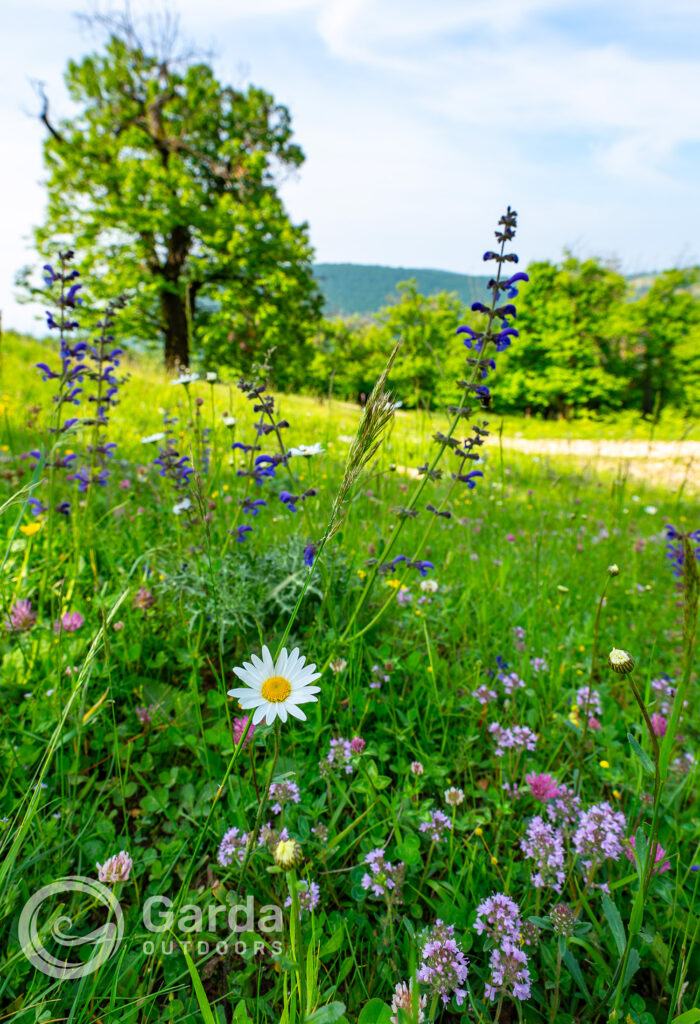
From birth, each baby calf receives attentive and loving care. The first 70-80 days of life are spent in isolated pens, an essential period for a healthy weaning, protected from external agents and bacteria that could cause epidemics.
Then, like little schoolchildren on their first day of kindergarten, all the calves are brought together in groups to begin socialising and preparing for life on the pasture.
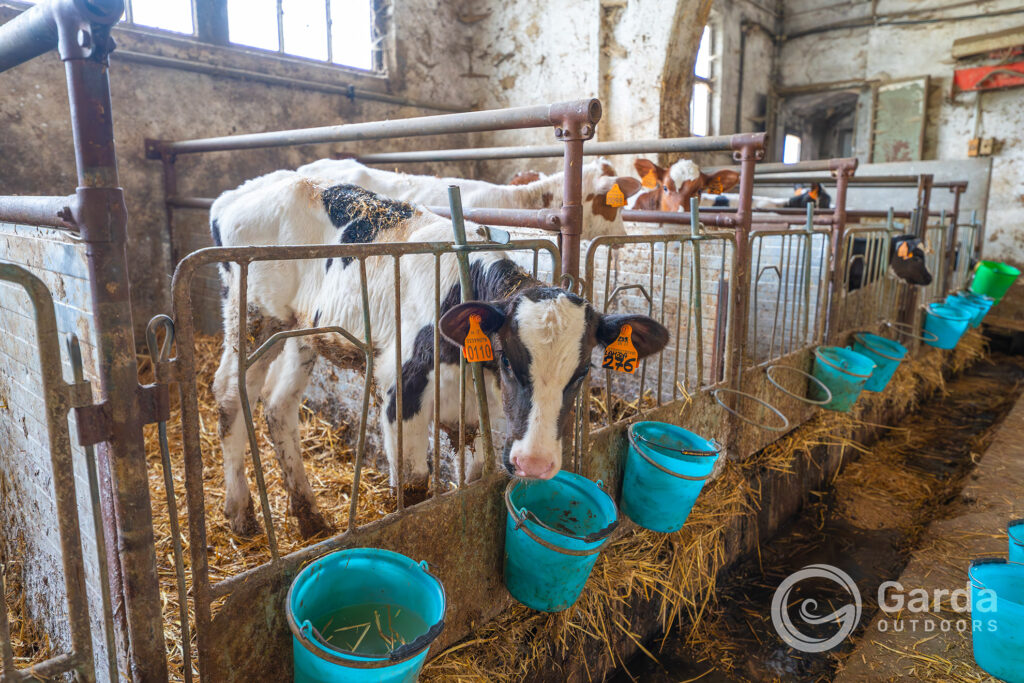
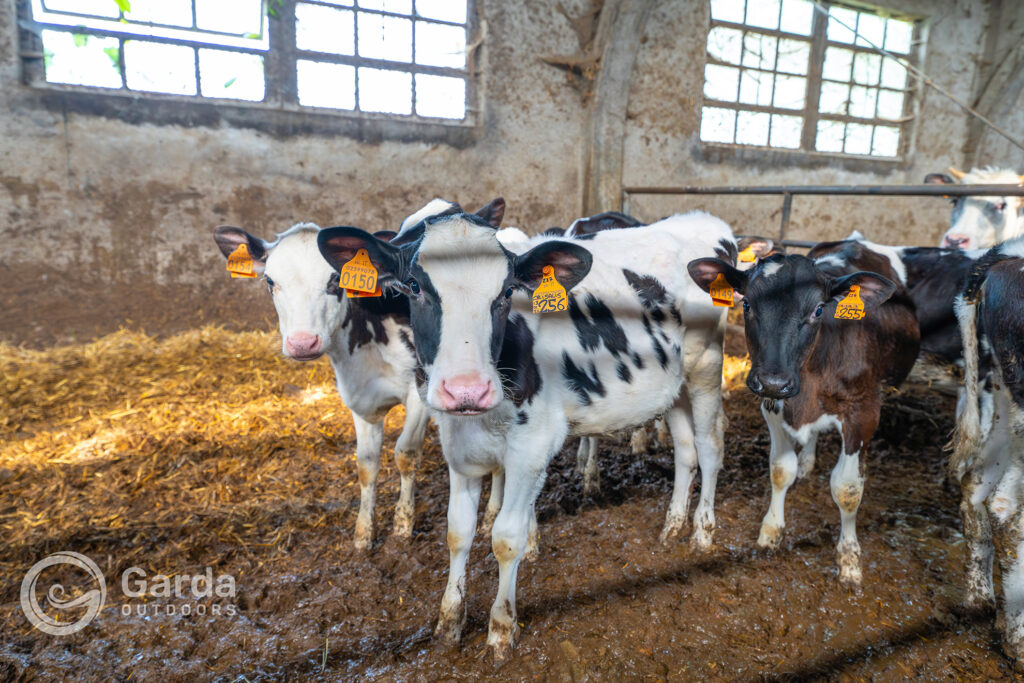
Three months on, the big day arrives: the first pasture! But safety remains the priority. Until they are 10 months old, in fact, the heifers always remain in the pasture, but in the evening, they are led into a special enclosure (very high and electrified) to protect them from wolves.
Giovanni, on this subject, tells me with a veil of sadness of a night a few years ago when, very tired after a long day spent making cheese, he was unable to close the enclosure in time. A wolf took advantage of this and a young heifer lost its life.
From March to June, the herd grazes in a charming 20-hectare chestnut grove in Lumini di San Zeno di Montagna.
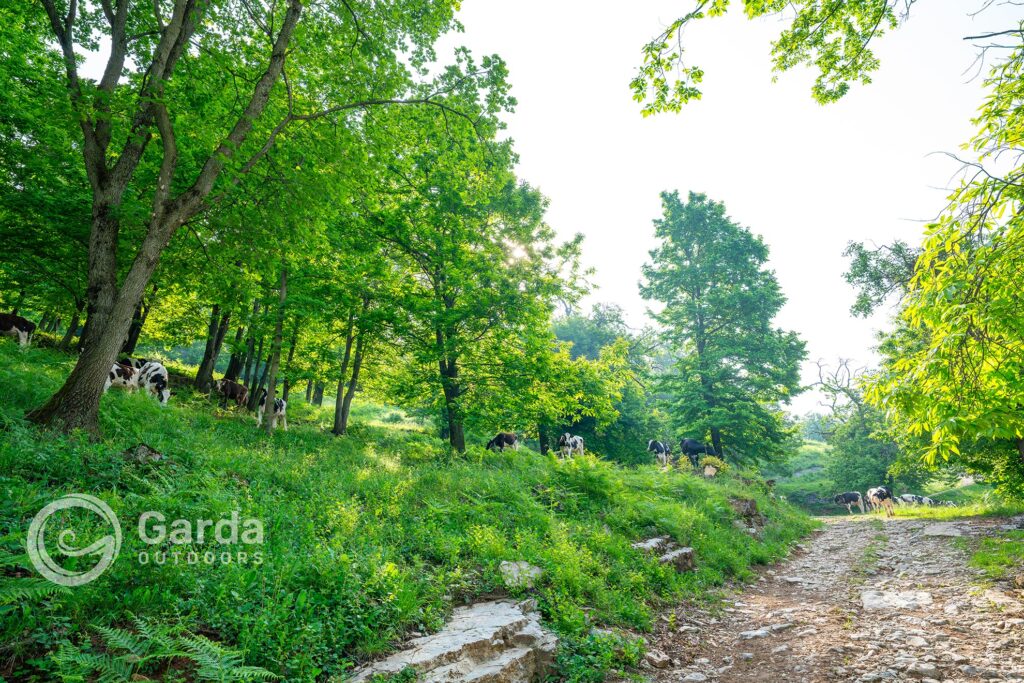
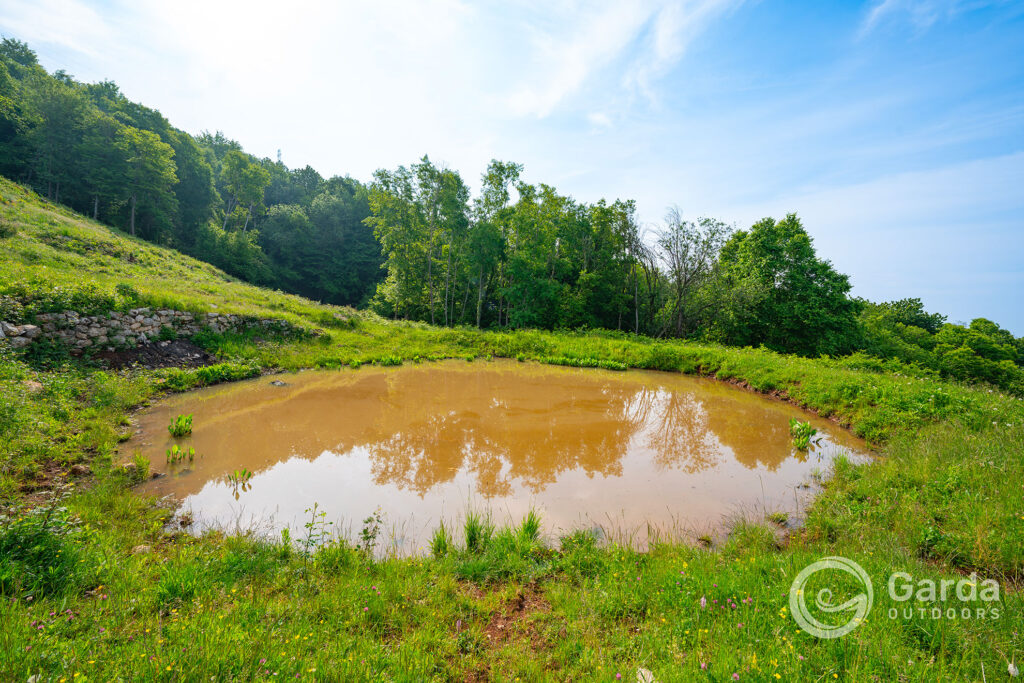
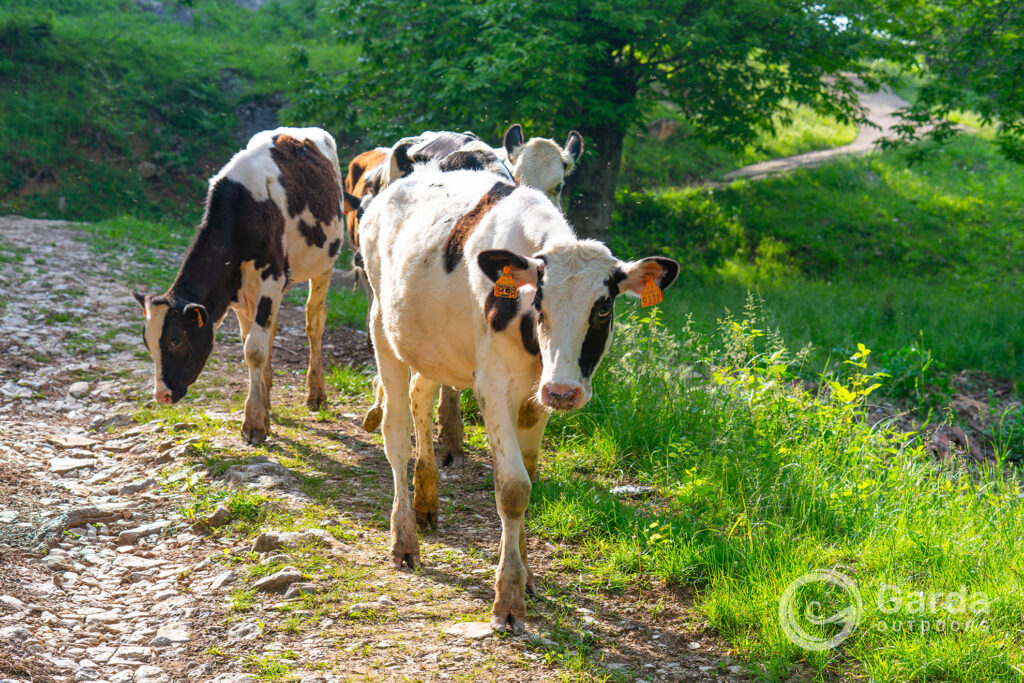
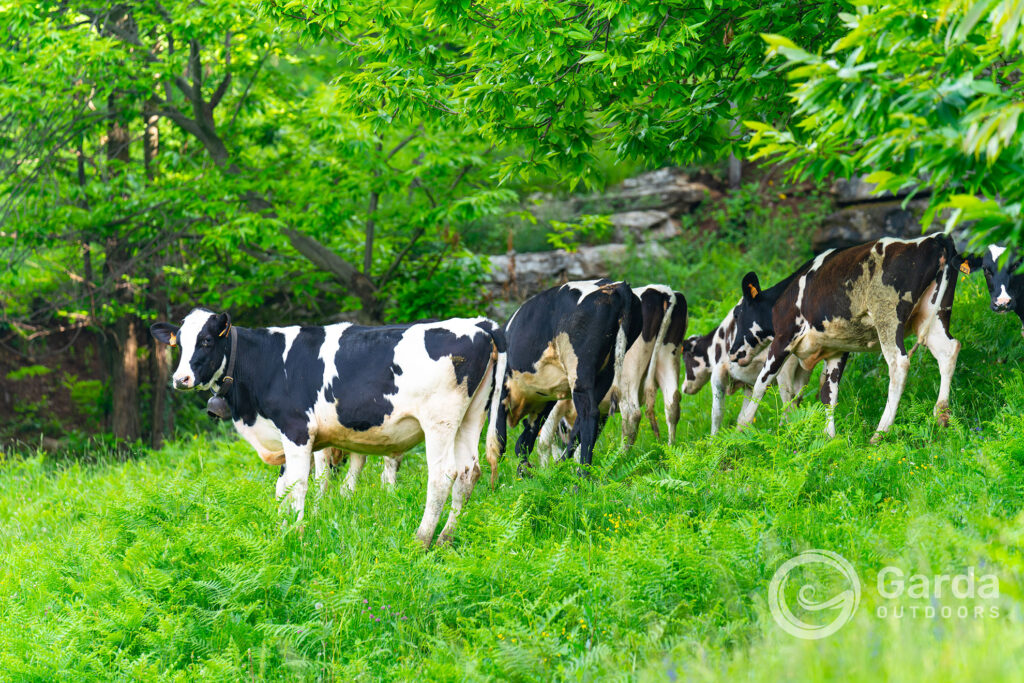
Then begins the evocative transhumance, an ancient and fascinating ritual that leads the cows to the mountain pastures between Naole, Valfredda and Val Vaccara, at altitudes between 1,300 and 1,700 metres.
On this special occasion, the entire population of San Zeno di Montagna, together with anyone who wishes to participate, is always invited to follow the herd up to the high pastures, with a healthy walk accompanied by laughter, sandwiches and a good wine.

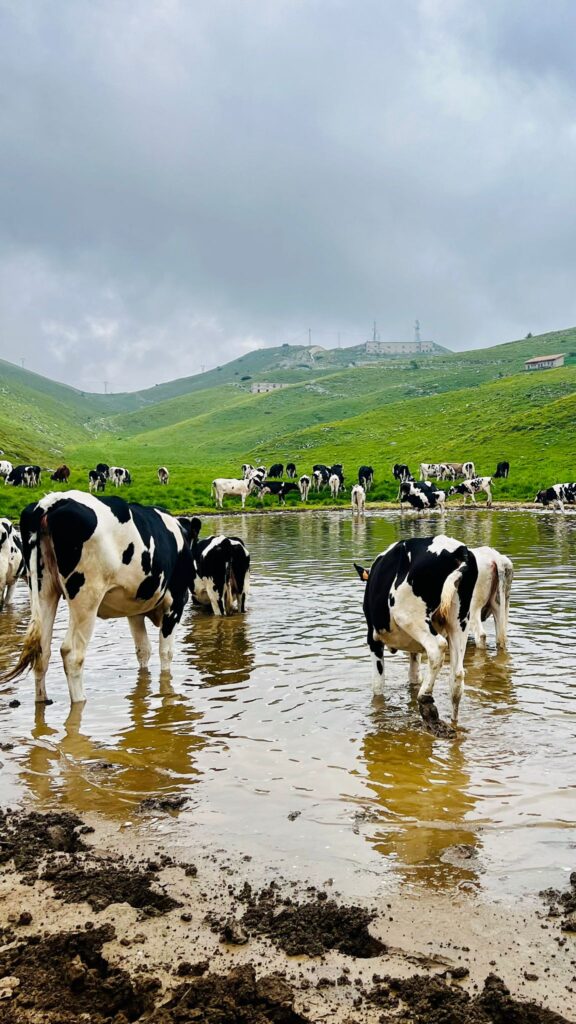
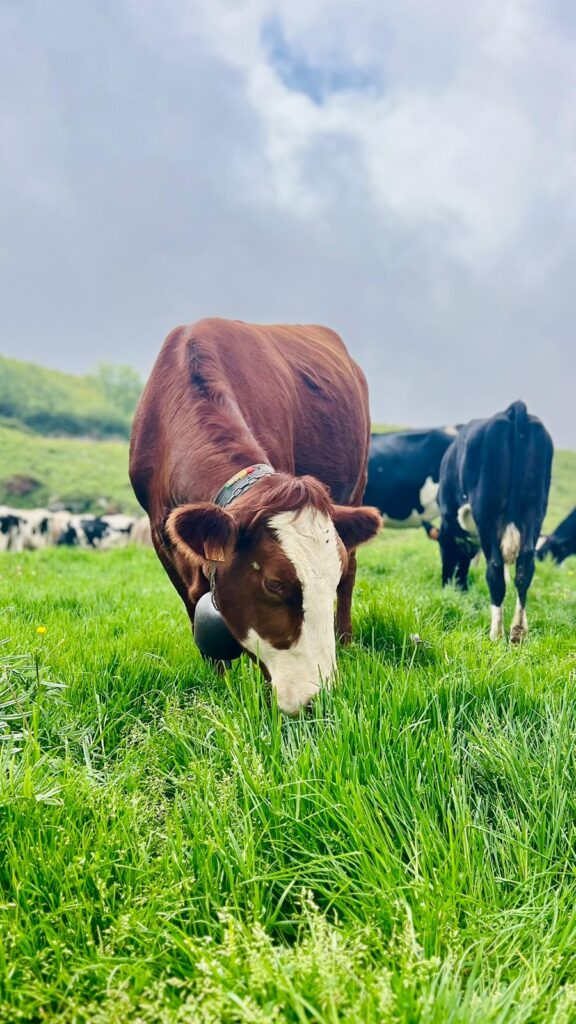
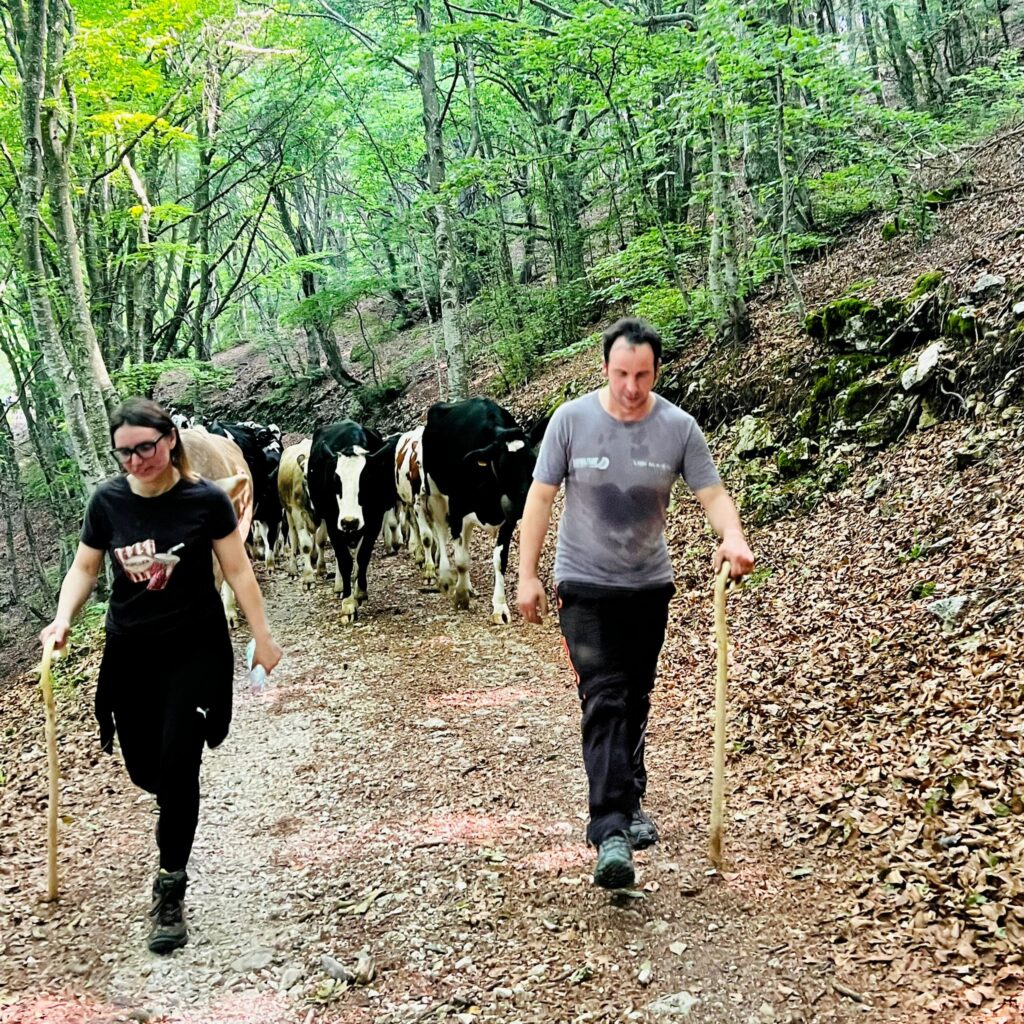
Milking also follows the natural rhythm of the seasons: only 10 months per year, unlike intensive farms that milk for 12. This allows the cows to rest their udder muscles, regenerate and even live longer, as is their nature.
On average, cows on Monte Baldo live three times longer than those on intensive farms – about 9 years compared to 3 – and their milk is tastier and richer in protein and good fats.
The older the animal, the better the quality of the milk. Did you know?
Today, the farm cares for 150 adult dairy cows and 150 growing heifers (referred to in the jargon as “the replacement calves”), which produce around 4,500 litres of milk every day.
A milk that is not only nourishment in its most genuine state, but a tale of a territory, respect for life, love of the mountains.
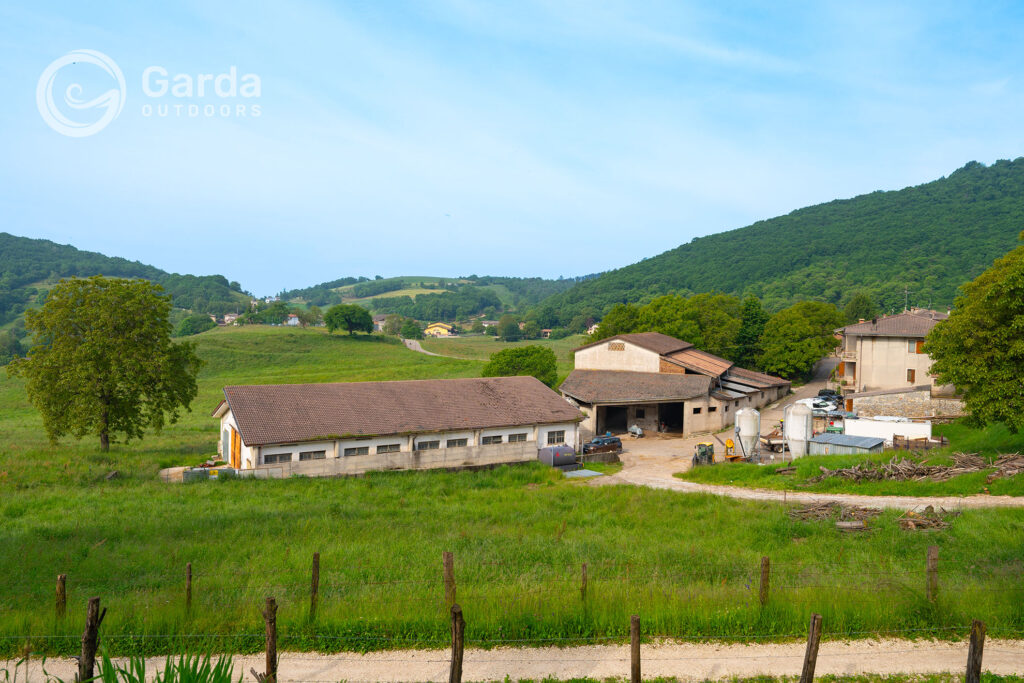
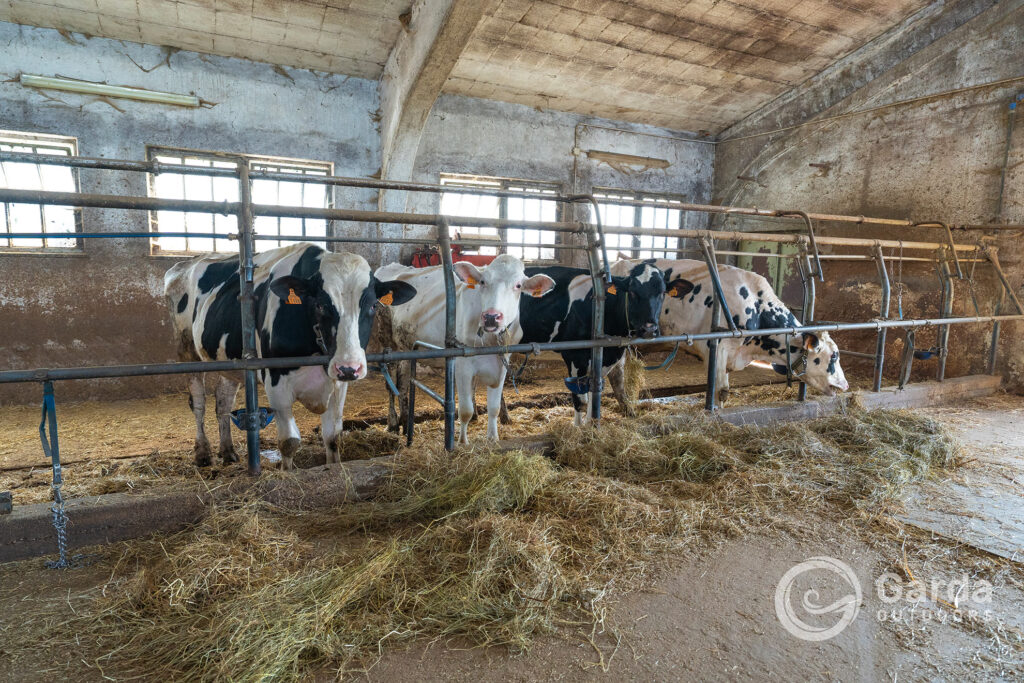
The magic of the dairy: where authentic taste is born
As soon as I cross the threshold of the dairy, I am enveloped by intense, familiar scents. Mamma Gabriella has just finished preparing the yoghurt – the real, genuine kind, without added sugar or additives – and, with almost ritualistic care, has already disinfected every instrument. Here, every gesture has a value, every detail tells a story.
A small world of tradition and passion opens up in front of me: the pasteuriser is ready to sterilise the milk (which is first filtered, then placed in a tank at a temperature of 4 degrees as it is milked, and finally sterilised at 75 degrees), the buttering machine waits to transform the cream into fragrant blocks of butter, while the skimmer works silently to separate the cream from the milk, giving way to new creations.
The cheeses are all made with a traditional cauldron, as was once done. And this is how creamy stracchino, various types of caciotta flavoured with wild garlic, chives, chilli and the unmistakable Monte Baldo truffle come to life, along with fresh mozzarella and ricotta.
‘If anyone asks, I also make mascarpone,’ Giovanni adds.
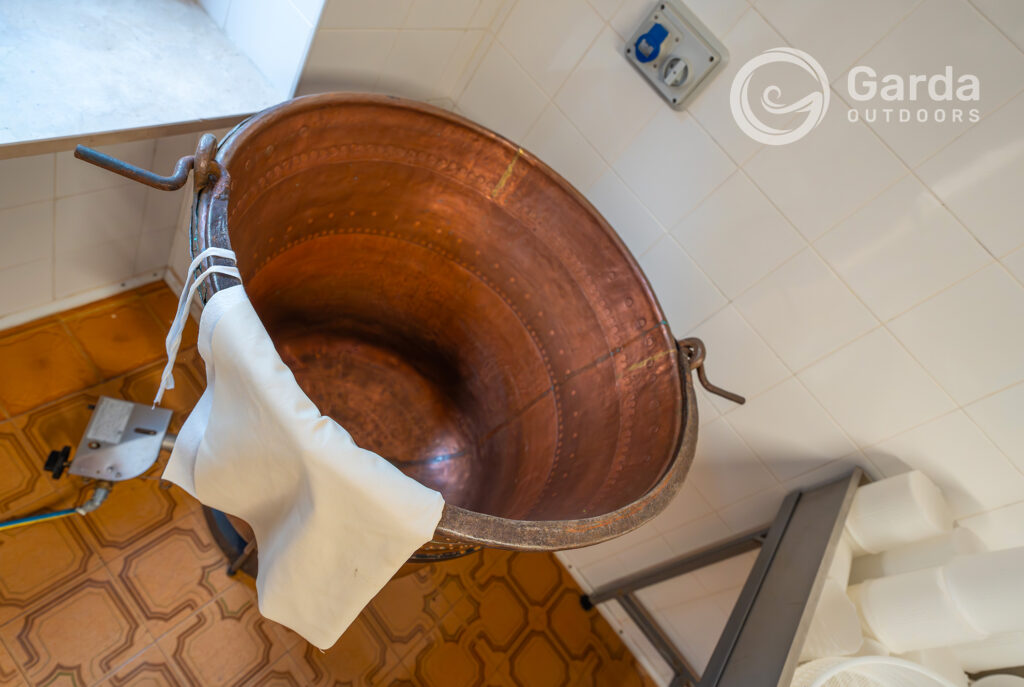
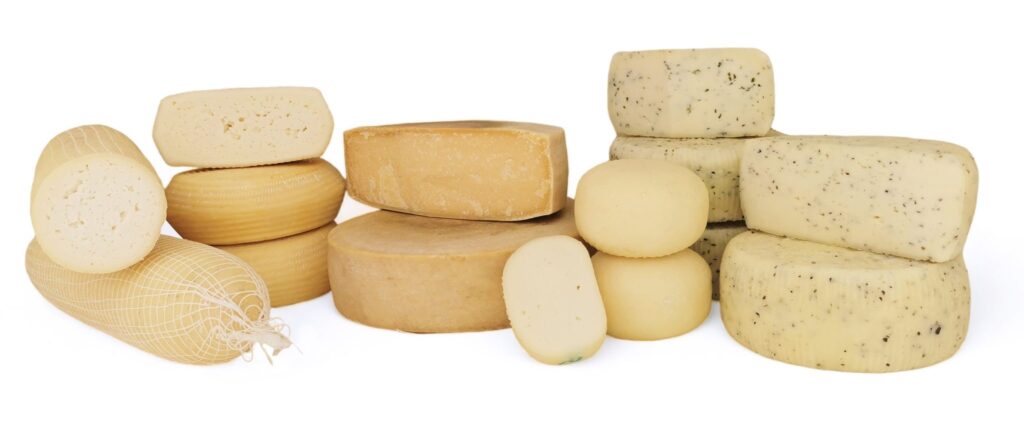
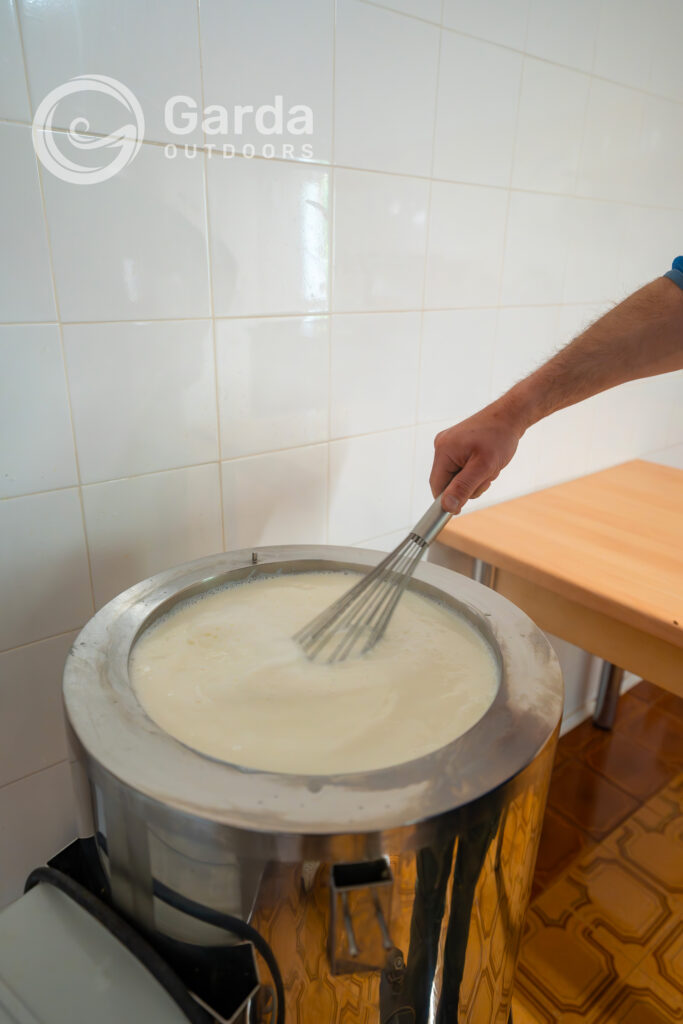
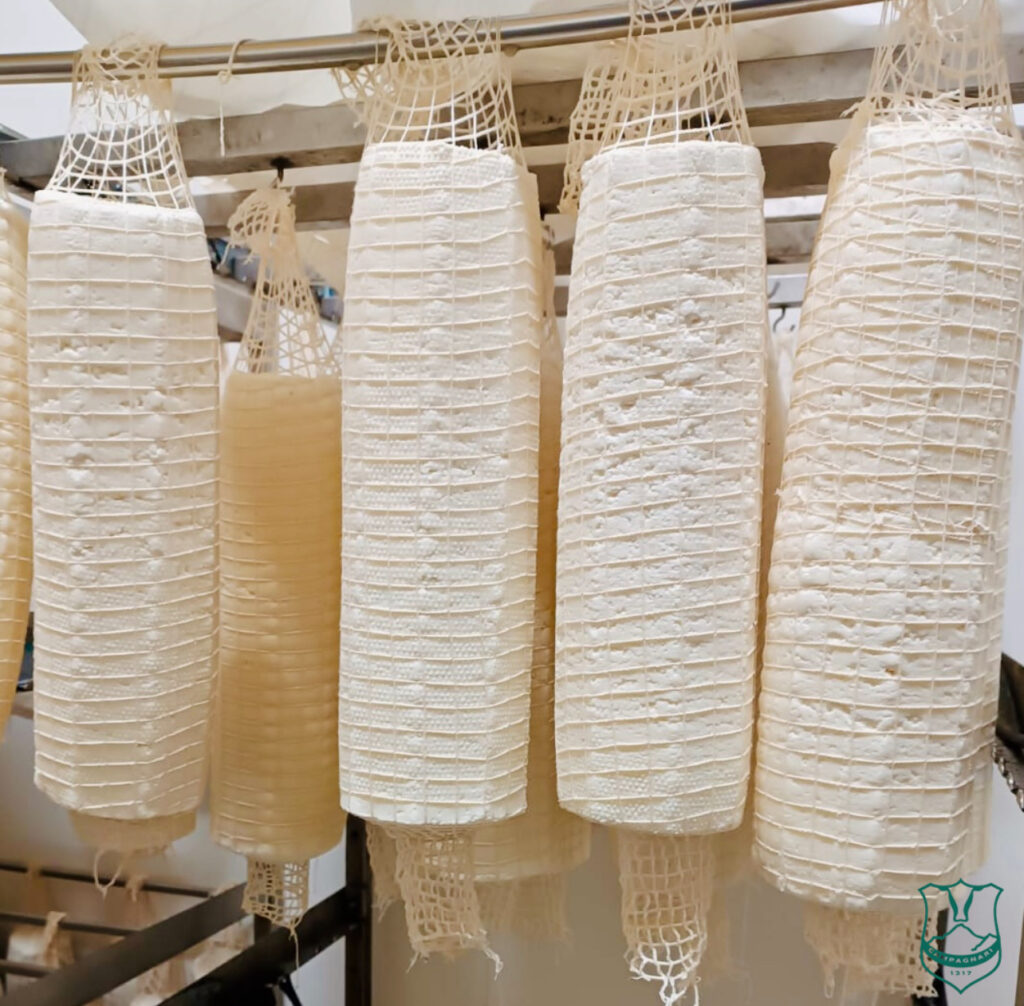
And then there is he, the king of cheeses: Stravecchio. A cheese that is born in the Malga di Naole, and is left to mature for a good four years in a natural cave, where time and rock mould an ancient and decisive flavour.
Knowing where the milk comes from – pure, local, rich – you can only imagine the extraordinary goodness of these products: it is a taste that tells of the mountains, of daily work, of the preservation of nature.
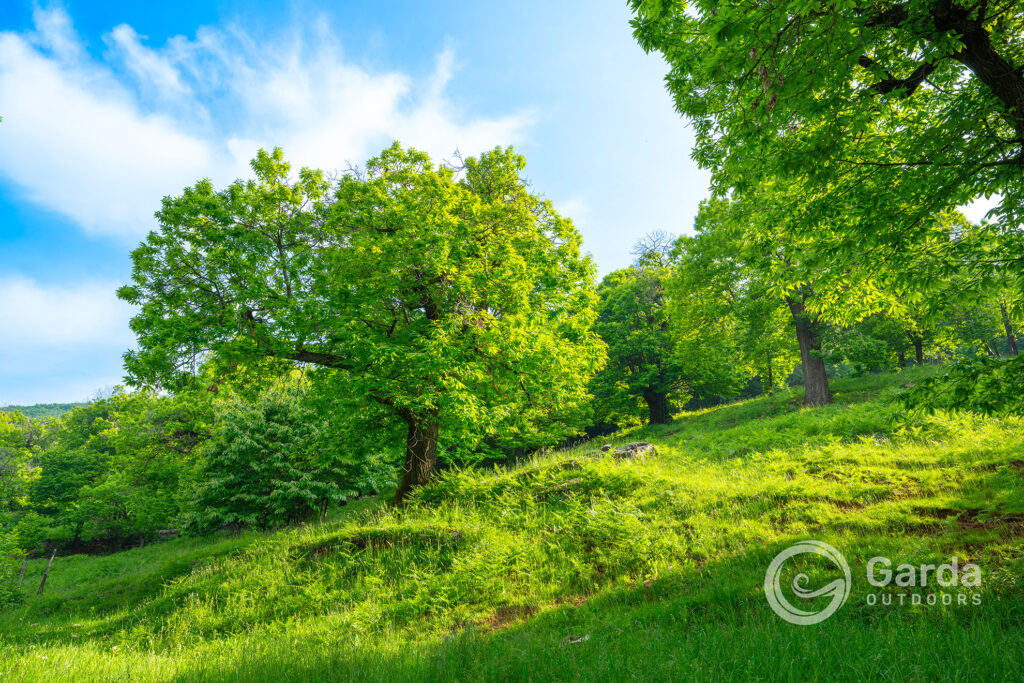
Hen eggs and more
In the heart of the farm beats another small great pride: the breeding of around 95 hens, free to roam every day in their spacious hen house, amidst sunshine, fresh water and plenty of peace and quiet. It is they who give us the most genuine eggs from Monte Baldo, the result of a simple and natural diet of broken wheat and field grass.
For their health and vitality, basins with sand and ash are available: the sand enriches their diet with calcium, making the eggshells more robust, while the ash is an ancient and all-natural remedy against feather mites – without the slightest recourse to chemicals or insecticides. A respectful cure, like in the old days.
Do you understand the abysmal difference from the eggs of big industry? The answer is all here: freedom, well-being and respect for life.
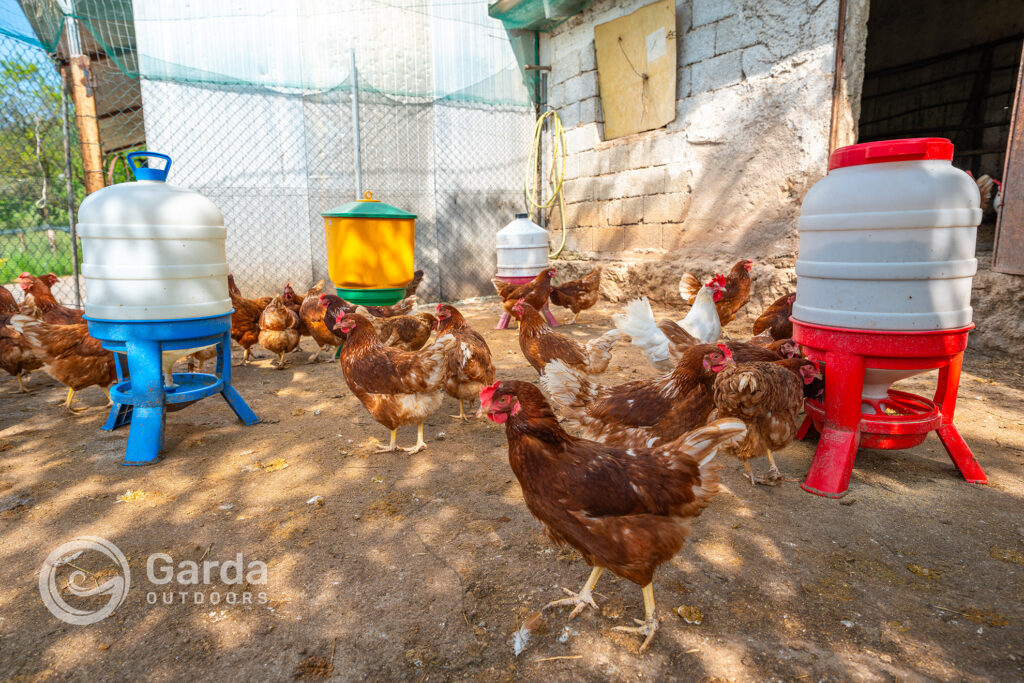
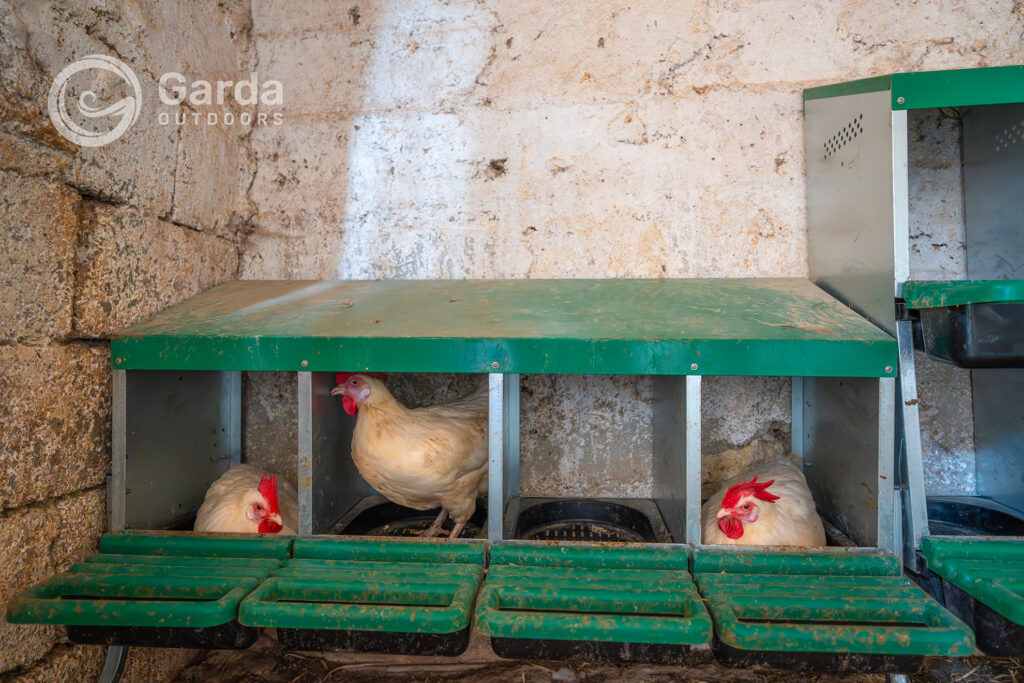
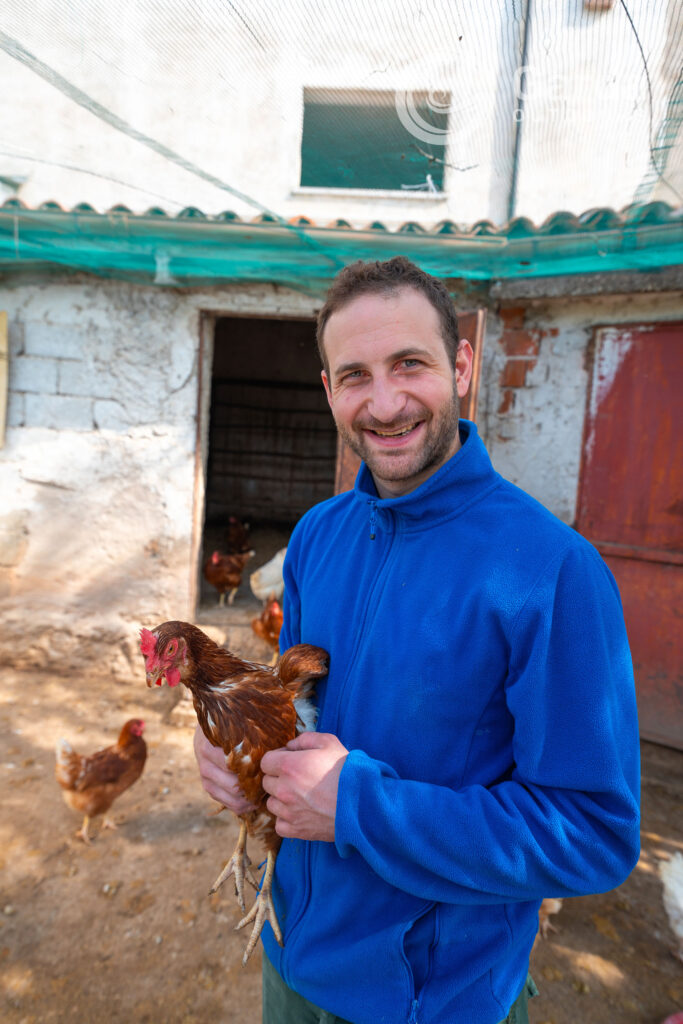
Every year, the farm produces as much as 80 quintals of the prized Marrone di San Zeno DOP, a true excellence of this territory. From the chestnut groves they also obtain a fragrant chestnut honey, thanks to the 40 beehives that host many tireless bees, protected in their paradise.
They also grow walnuts, the trees of which are not only used to harvest the fruit: here on Monte Baldo they are planted above all for their ecological function. Their strong, dense roots, in fact, consolidate the soil near slopes and paths, protecting it from erosion.
And for those who love the authentic flavours of rural tradition, they also breed a dozen pigs with which they prepare rustic salami and other delicacies, always respecting natural rhythms and true quality.
A wonderful farm, with a heart deeply rooted in the land and the truth of things done well.
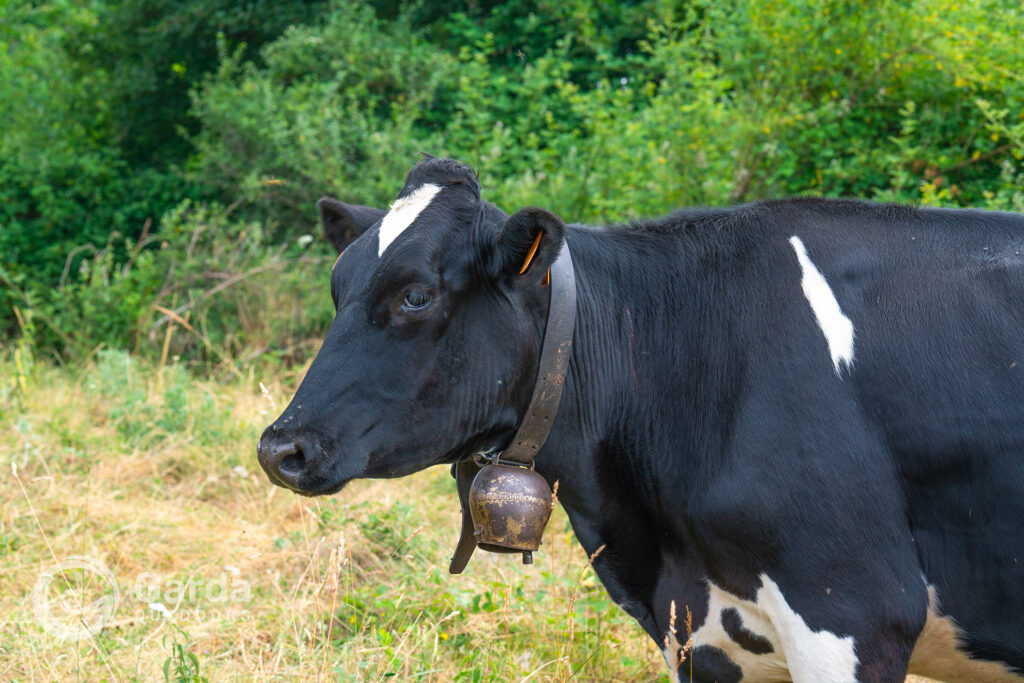
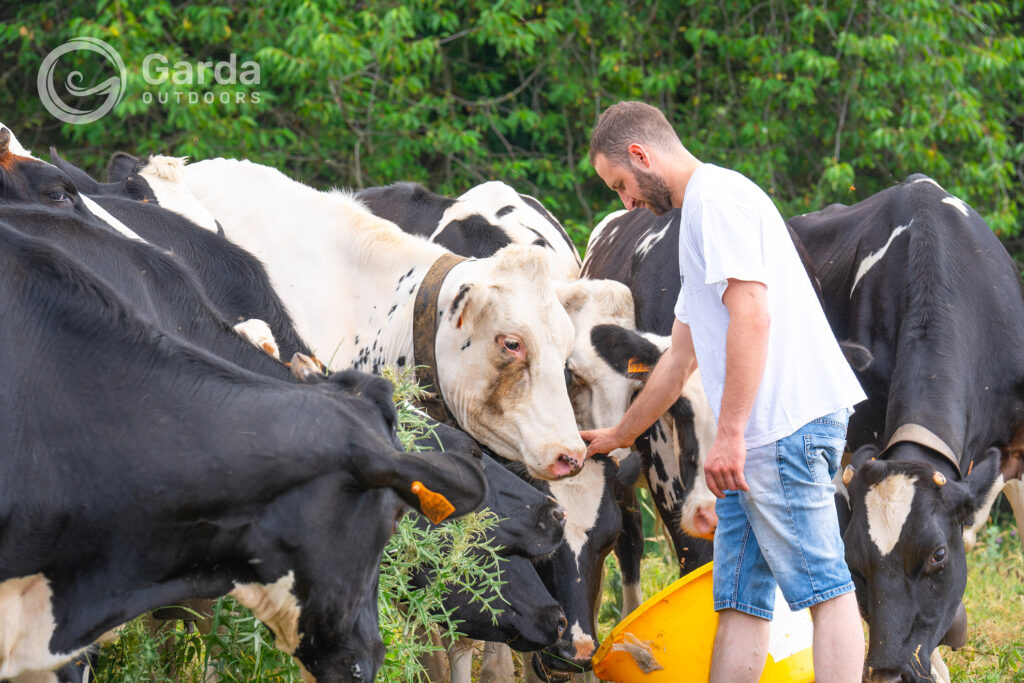
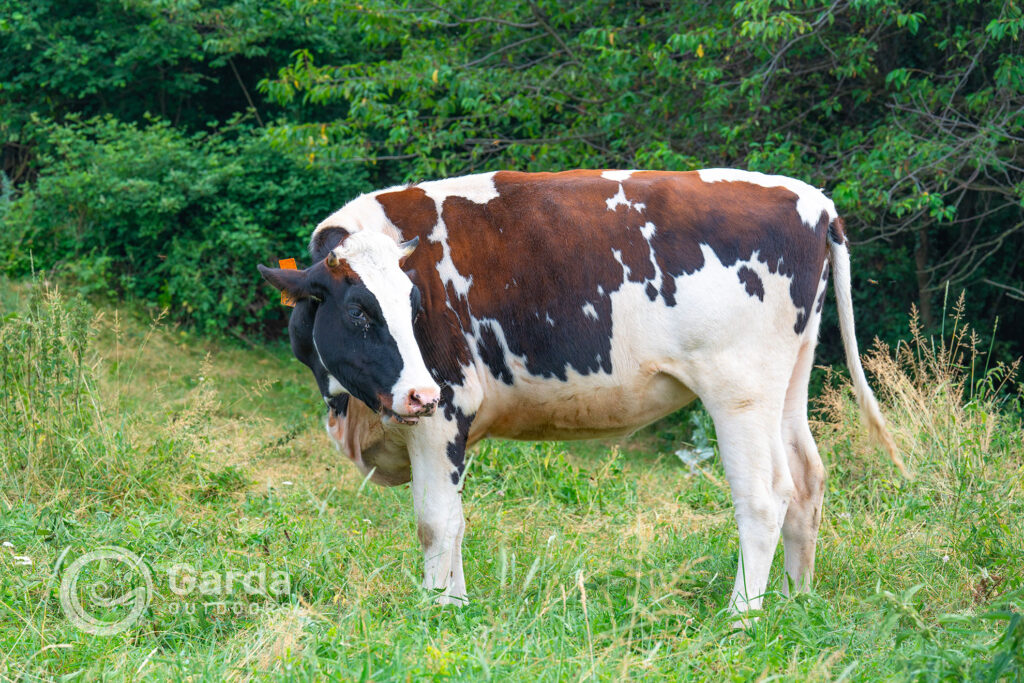
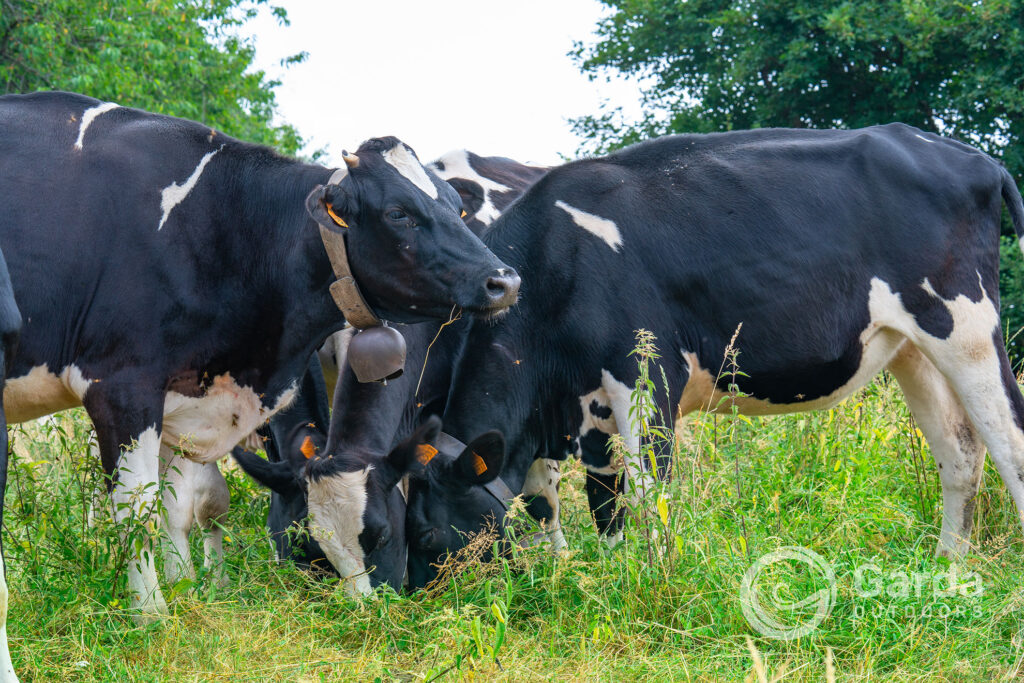
Now you may ask: where do we find all these delicacies? The farm has a small shop, with tasting, right in the centre of San Zeno di Montagna, opposite the large parish church, called La Casara del Baldo.
You might happen to buy a nice bottle of milk and feel it still warm from pasteurisation. This is a feeling of pure happiness that no hypermarket can ever give you!
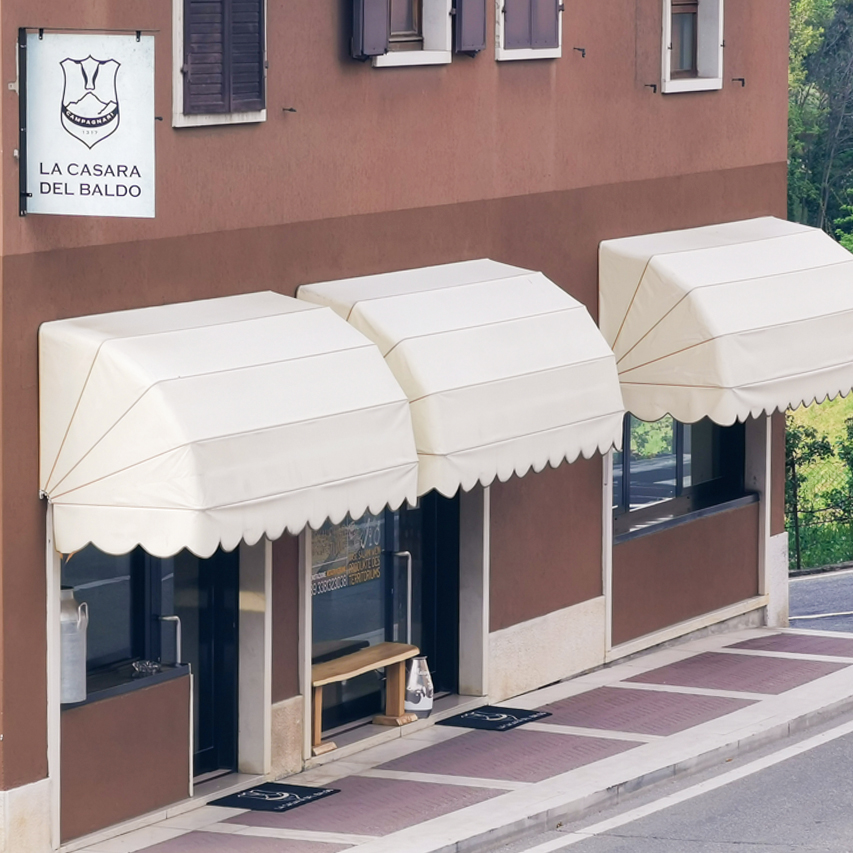
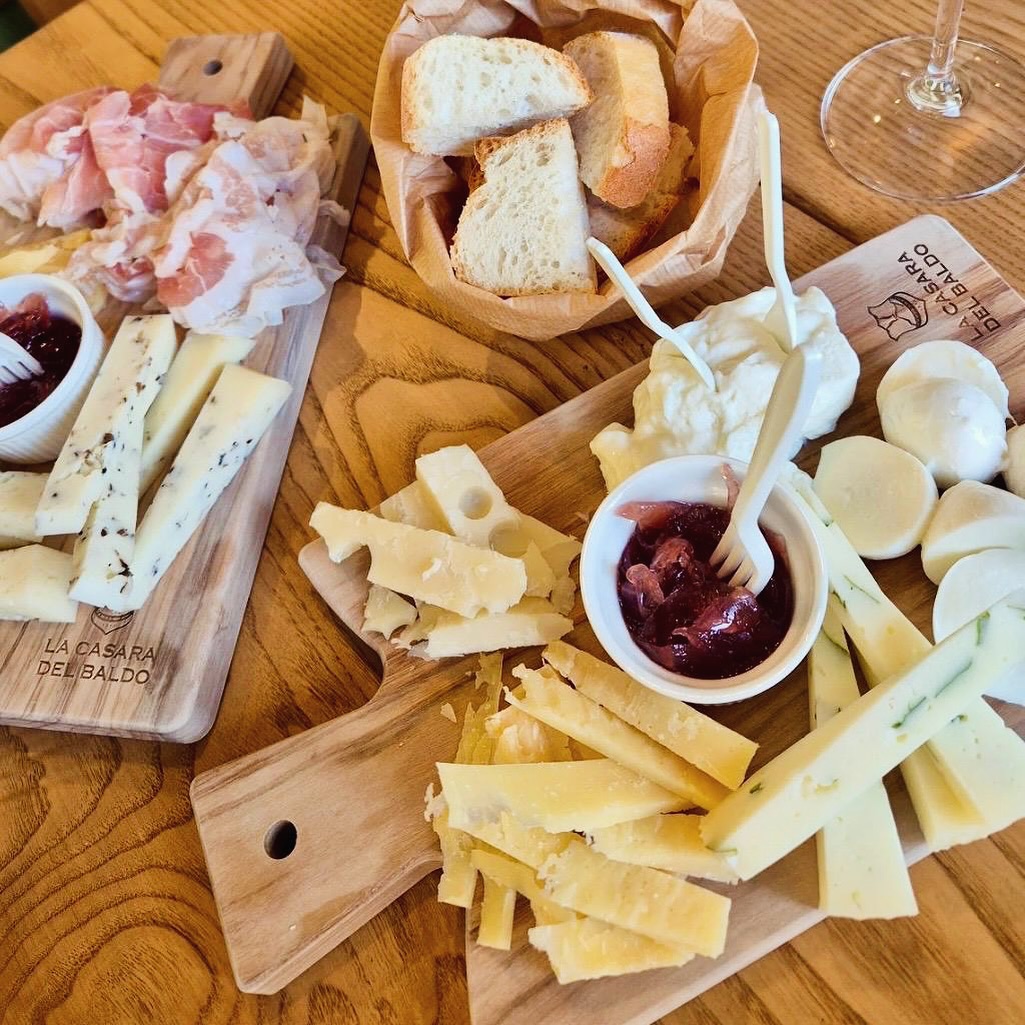
I hope I have succeeded in conveying and telling how life here is made up of time-honoured traditions, which make every dish perfect in taste and authenticity.
The hours spent with Giovanni were full of real life, unfiltered tales and much honour to his work.
Ciao dear Outdoors!
Silvia Turazza
